Get the latest update on the Balance Model Initiative: council report and full interim summary
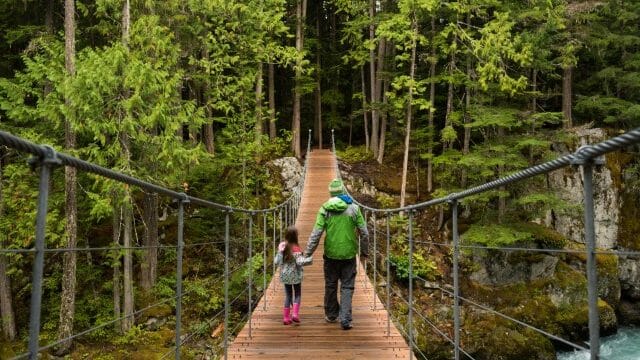
Community Planning – Balance Model initiative
This initiative seeks to understand the changing trends in Whistler’s population – and study the capacity of services and amenities to support that population. The intent is to consider the implications of growth in the context of progress towards the achievement of Whistler’s vision – such that implications for social, environmental and economic performance are all considered.
Based on historical analysis of relationships between population changes and community performance over the past 20 years, a model is being developed to project and test a range of scenarios that may occur over the next 20 years. This will enable the municipality and stakeholders to consider the implications of shifting trends in population, and establish strategies and actions to work towards achieving goals for and with the community.
The Balance Model is comprehensive in that all population segments are considered, from permanent residents to temporary residents, both owners and renters, resort workforce and non-workforce, as well as visitors – regional and destination and both overnight and day.
This initiative is being progressed with input from the Strategic Planning Committee, a standing Committee of Council that was initiated in 2019 to act in an advisory capacity to support Council in its decision-making related to community and land use planning and growth management.
There are three key phases being undertaken in this community planning work:
- Current State Assessment
- Future Population Scenario Testing
- Strategies and Actions
As of June 2022, Phases 1 and 2 (the Current State Assessment and Future Population Scenario Testing) have been completed and shared with council and the public.
Read the Phase 1 Report to Committee of the Whole, or watch the live presentation
Read the Phase 2 Report to Committee of the Whole, or watch the live presentation
Read the Interim Summary Report to Council, or watch the line presentation
Timeline update We are currently working to refine the Balance Model and revise the original balance model insights; an update is expected to be complete in late Q1 2024.
The Balance Model process has resulted in the identification of three foundational implications – which are fundamental to the community’s success and well-being, and critical to resolve in order to have meaningful impact on reaching our vision in the OCP.
The Foundational Implications are Housing, Transportation, and Demand Management, as they impact all aspects of community balance, as depicted in the image below.
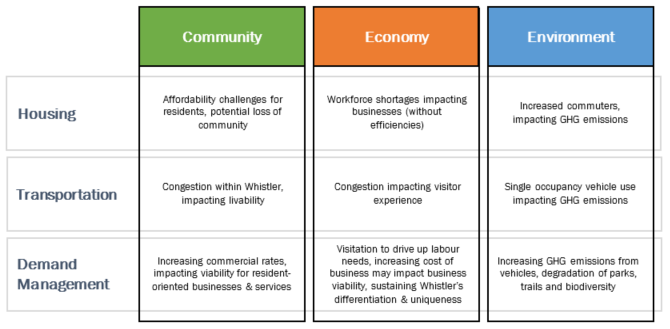
Housing
The current housing challenges will continue to worsen, as demand for employees continues to outpace additional supply of employee restricted housing, leading to inevitable further workforce shortages.
The chart below depicts the future Growth of Year-round residents (particularly workforce members) that continues to be constrained by the availability of housing, resulting in further workforce shortages.
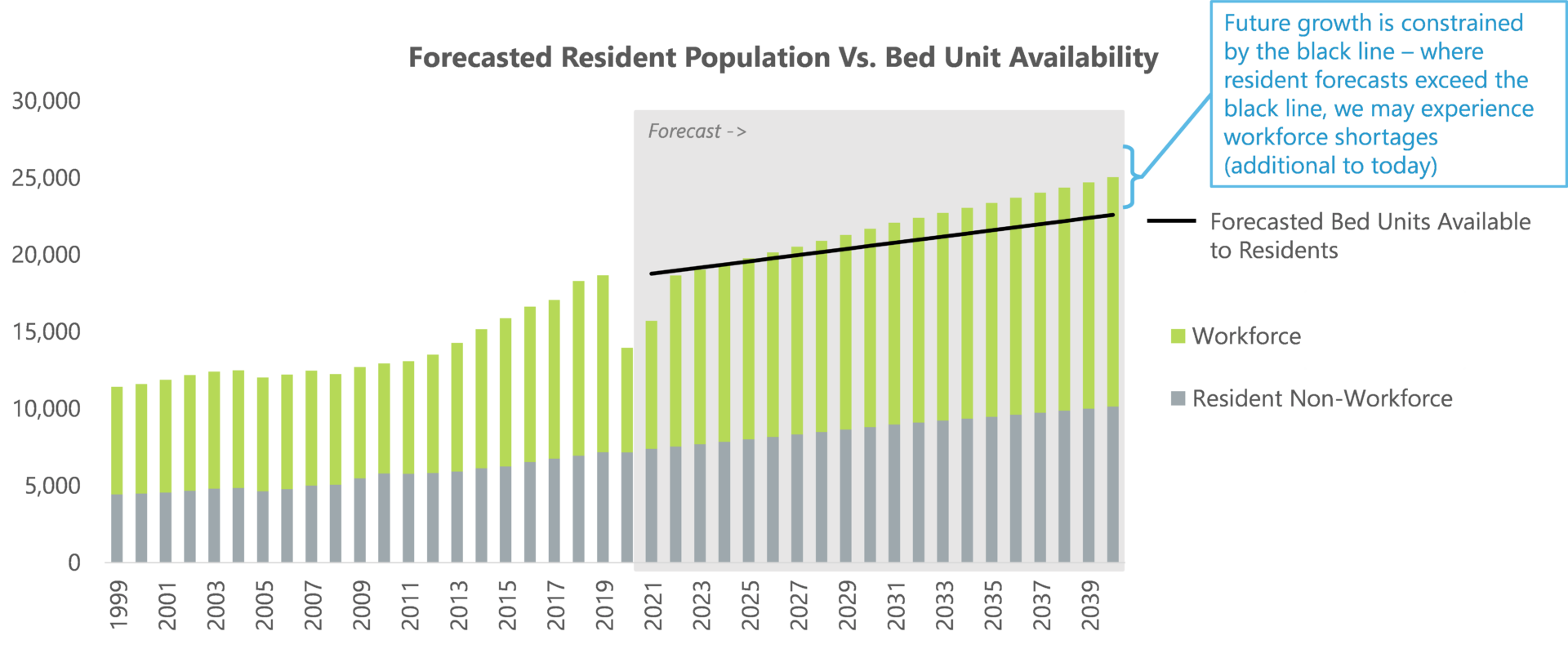
Transportation
Transportation congestion and related GHG emissions have worsened during COVID, and will continue to challenge the community – exceeding the capacity of the highway and village roads resulting in longer congestion and travel times, while also neglecting to meet GHG emission targets, and impacting both resident and visitor experiences.
The chart below shows the impact of future increases in population and visitation that leads to increasing traffic on the highway – pushing us well beyond our 2030 Big Moves climate goals even as we consider the transition to electric vehicles.
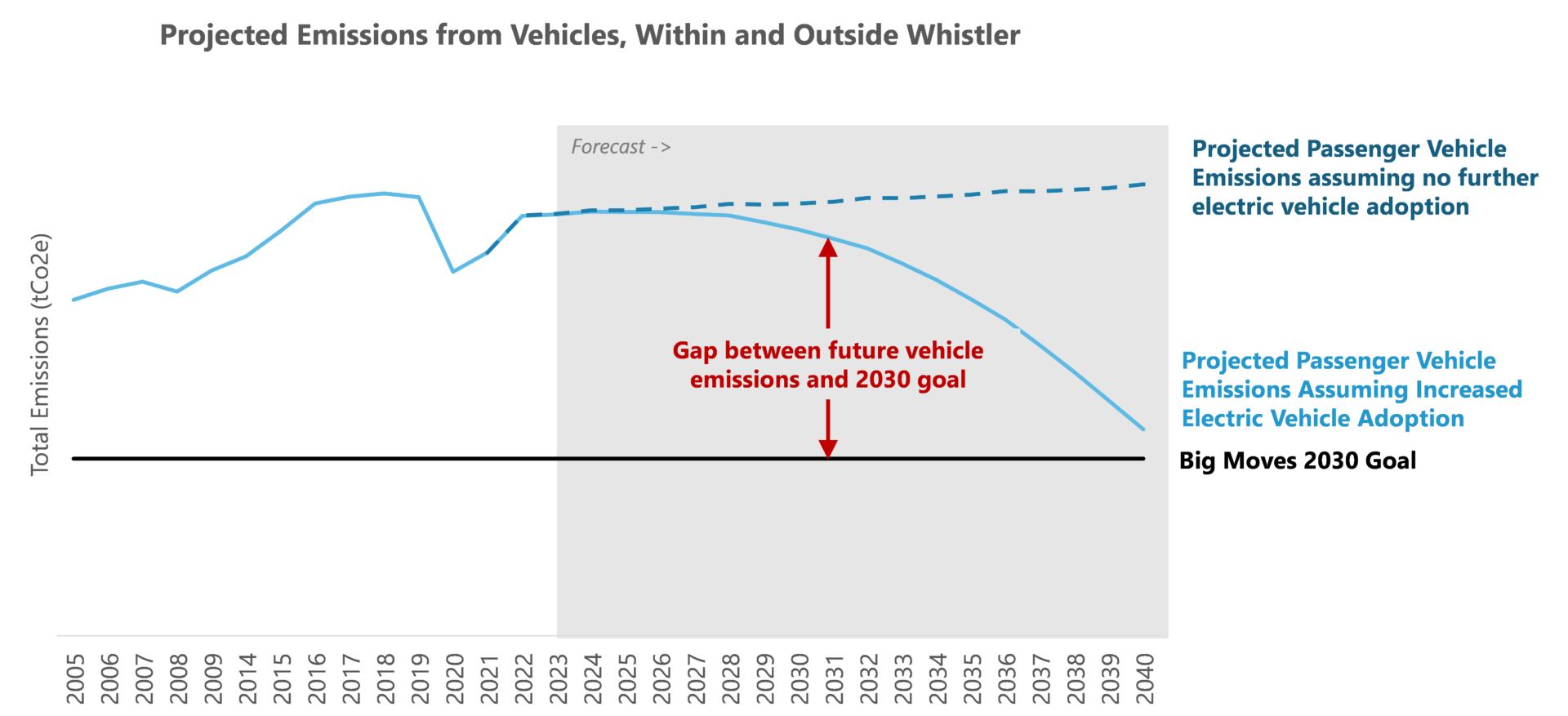
Demand Management
Demand Management is needed as visitation will continue to increase from external forces outside of RMOW control to fill the existing built capacity, until current ‘peak’ visitation levels become the average. Increasing visitation levels will also drive up the need for workforce –further exacerbating the current housing and transportation related challenges as described above.
The chart below shows hotel occupancy levels continuing to increase up to maximum operational capacity. Based on strong forecasts for regional population growth and YVR’s expansion plan, tourism in BC is not likely to slow down – and while visitation levels are currently strong, there is room for this to grow further.
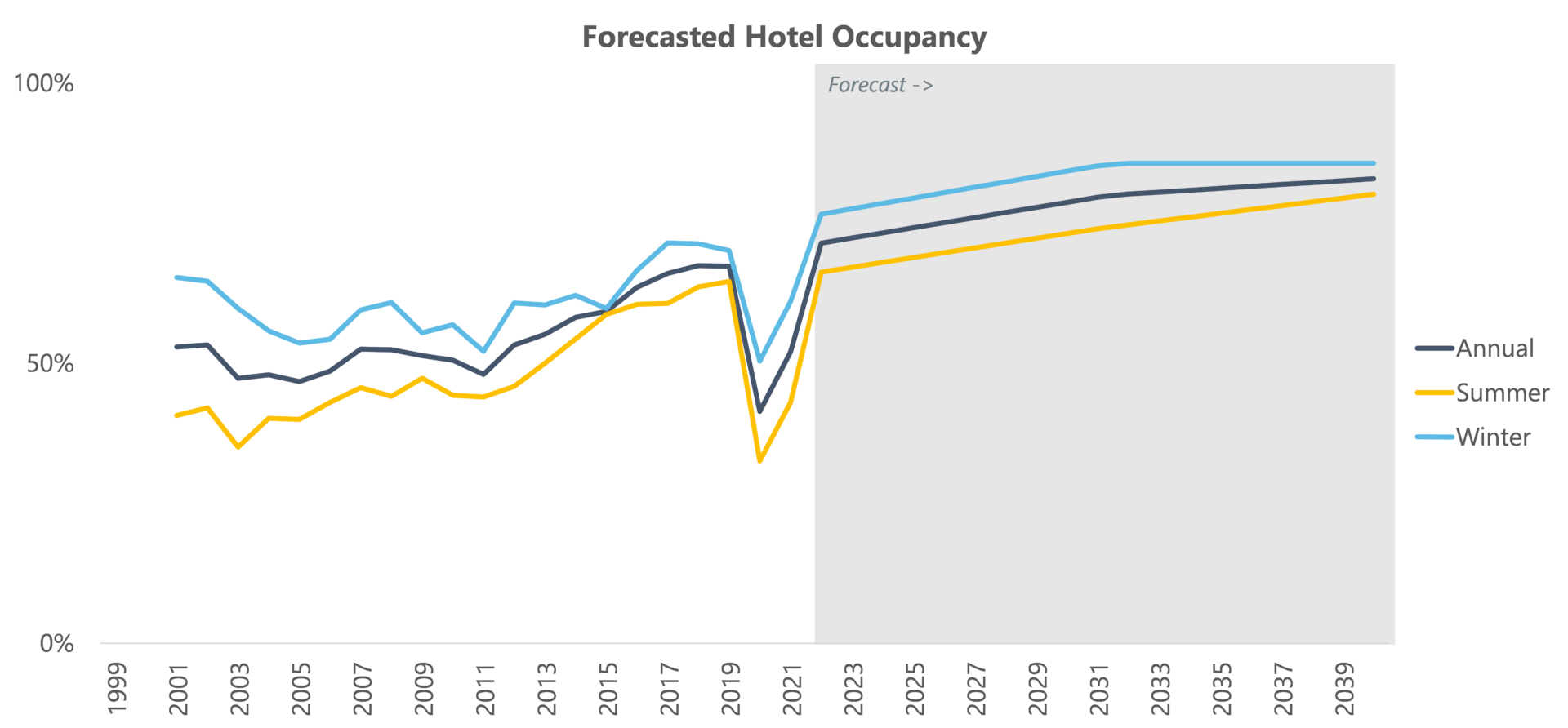
The chart below shows potential for increased day visitation within parking lot capacity as Whistler continues to be a popular destination year-round.
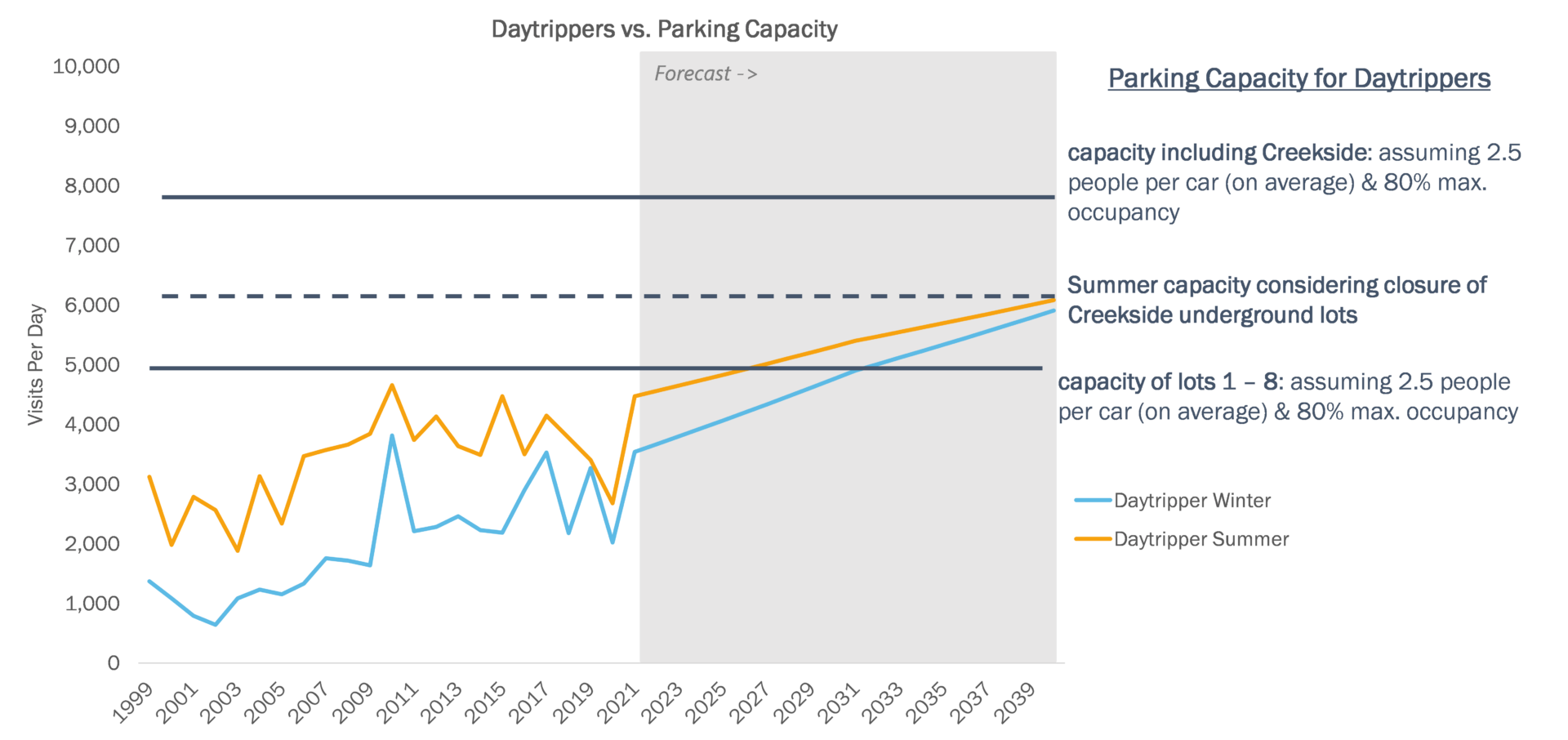
The Balance Model itself will be an integrated modelling tool for use in Community planning, ongoing analysis, and evaluation of progress against the goals we have set out in the Official Community Plan. It is a management tool to help inform decision making – it will not in itself provide strategies, actions or solutions, but will provide data and analysis to support staff with their work, and Council in its decision making.
- Provide segmented estimates of Whistler’s current daily population levels and historical trends including both residents and visitors
- Test potential scenarios of Whistler’s future daily population levels, including both residents and visitors
- Examine the relationship between population and indicators of community, economic, and environmental performance
- Identify implications, tradeoffs, and pain points between community, environment, and economic goals
- Predict future potential performance of indicators of community, economic, and environmental performance given possible future population scenarios
- Provide key insights to enable strategic discussion with community stakeholders on future potential implications and proactive management

Forecasted Influencers
The balance model will forecast the future population based on potential ‘influencers’ of growth. For example, the Lower Mainland population influences visitation from the region, so the expected future Lower Mainland population is used to inform forecasts for Whistler’s visitation levels.
Built Capacity
Future scenarios of built capacity (e.g. tourist accommodation, parking, residential housing) are layered over population forecasts to reflect Whistler’s ability to accommodate future growth.
Forecasted Population Segments
Constrained population projections are developed by combining the above two steps. Projections will be formed at the segment level (e.g. workforce, residents, visitors, etc.).
Projected Future Indicator Performance
A range of community, economic, and environmental indicators are projected 20 years into the future for each of the population scenarios.
Strategies & Actions
The future performance of community, economic, and environmental indicators in various population scenarios will be used to foster important engagement with community partners as to future strategies and actions.
Contact
For questions and inquiries contact economicdevelopment@whistler.ca
